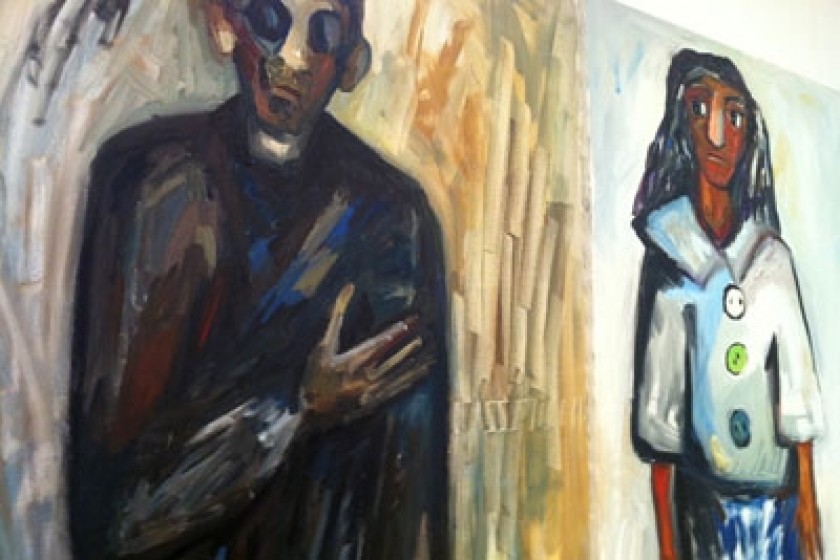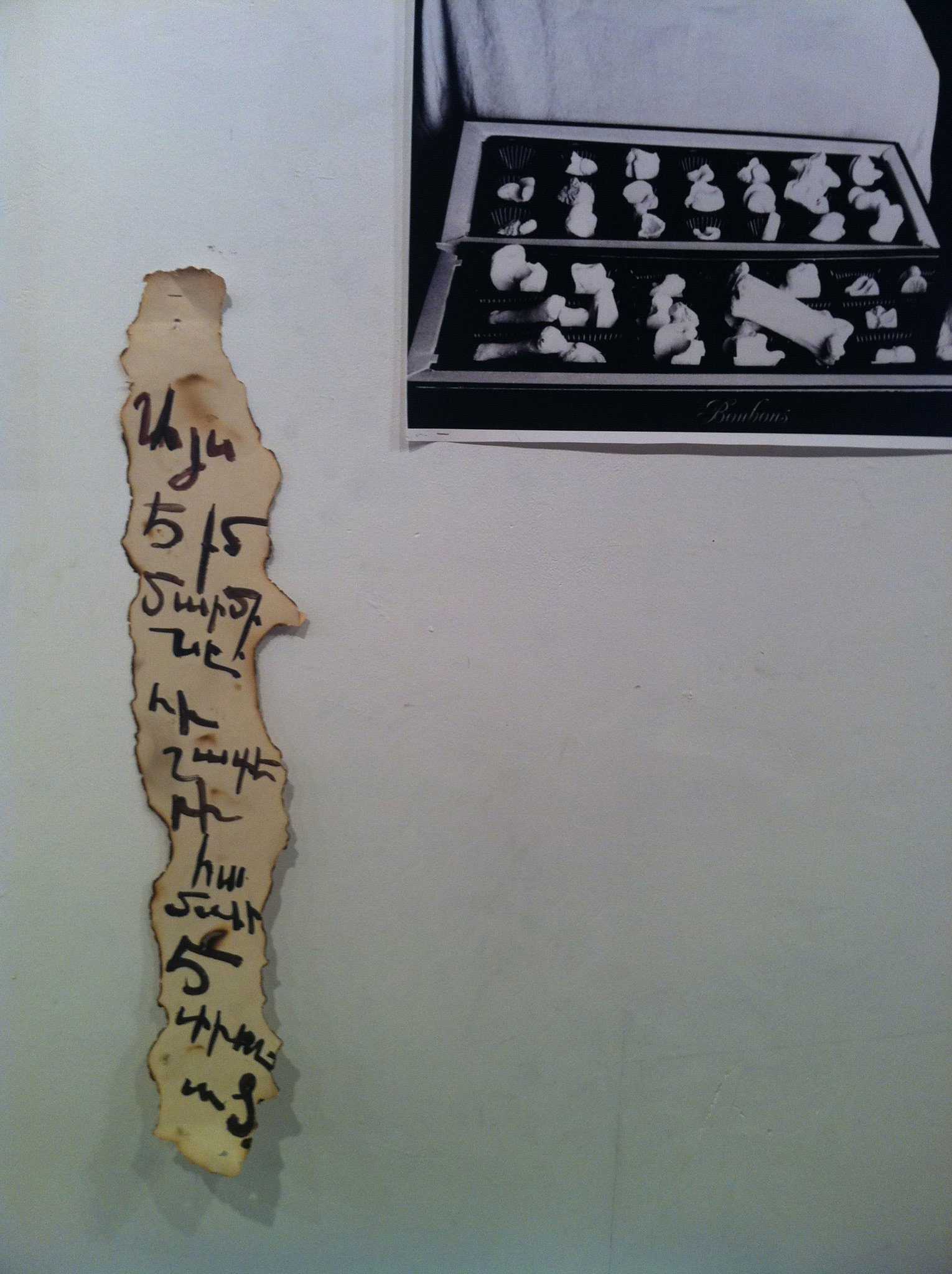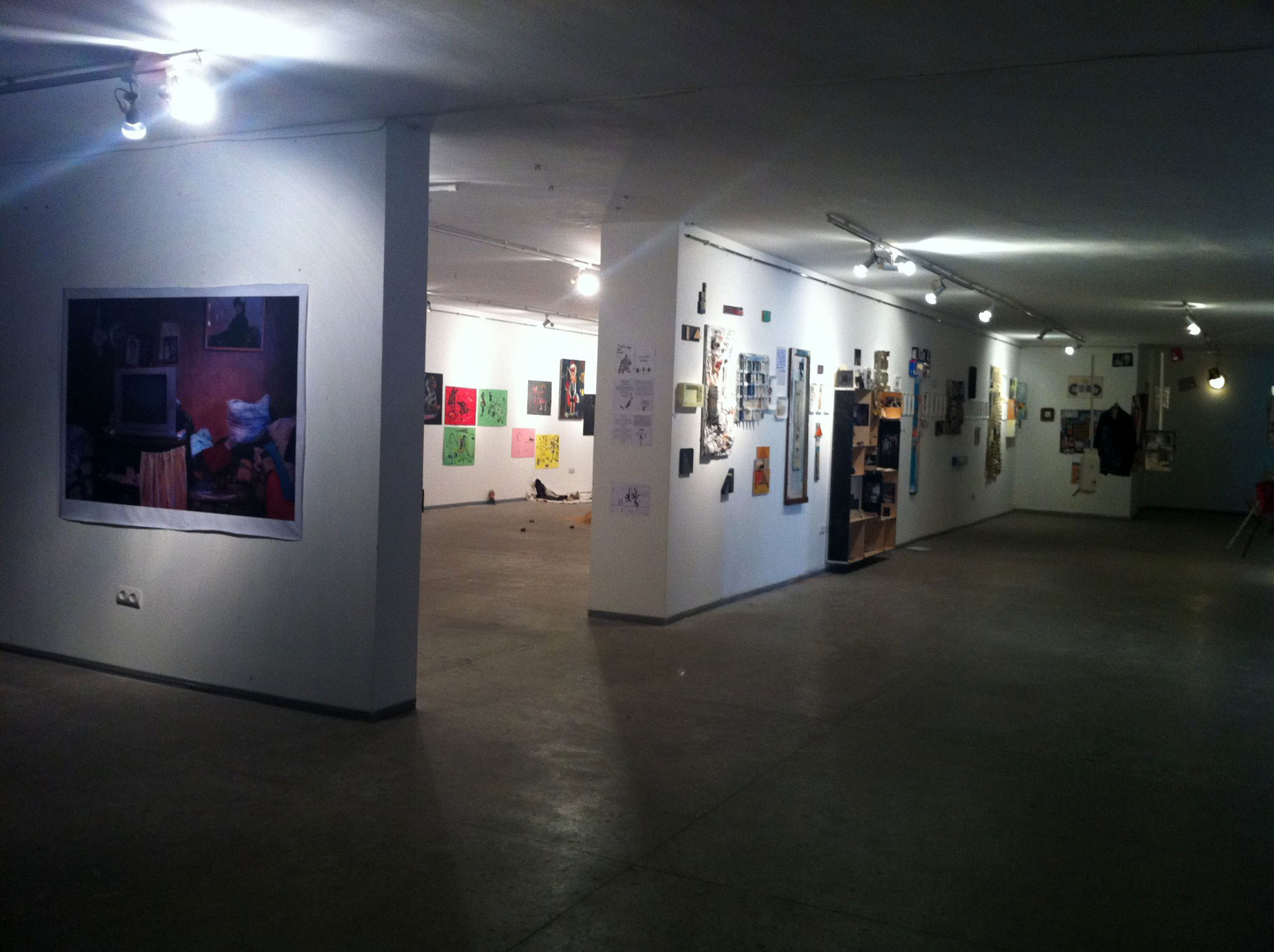
An American in Armenia: Day 17 – An Artist’s World (The Other Interns #2)
Samuel Armen
It was on Day 17 when I learned that one of the interns worked at an exhibition that was directly connected to the building that holds the HetQ offices. This came as a surprise, not only because the intern and I spoke regularly and had become good friends, but also because we both walked to and from our jobs at similar times.
The oddest facet of this discovery was the fact that neither of us were working on this day, but were instead going for a walk around Yerevan. When we passed by our respective work places, we simultaneously pointed to the same buildings, saying “That’s where I work.”
The world of journalism is very difficult in Armenia, because much of the information is controlled by various authorities (or groups of people who think they are authorities, and have convinced enough Yerevanatsi’s that they are) – some good and some terrible.
Inexorably, many critical stories would be tilted, corrupted, doctored or nonexistent. In a multitude of conversations, both with locals and Spyurkahyes (Diaspora Armenians), I would state that I worked for HetQ, to which many replied that they are one of the few media outlets that provides truth.
The female intern who walked beside me is also an artist, both in practice and study. She studied art history for some time, and was more than delighted to have AGBU’s YSIP land her an internship in an art gallery.
Being a writer (or at least one who is pursuing writing), I was curious as to what an internship was like for a fellow artist.
The following is an interview between this intern and I:

Where do you work?
In Armenian letters, it would be Նորարար Փործառական Արվեստի Կենտրոն
ՆՓԱԿ. The abbreviation in Armenian is simply ՆՓԱԿ or ‘NPAK’. In English it would be the Armenian Center for Contemporary Experimental Art and the English letter abbreviation would be ACCEA.
What is it?
A contemporary art gallery.
What exactly did you do?
Mostly I would be gathering information for the next exhibitions, for example on September 2nd there will be a display for the artist David Kareyan. I also helped organize the gallery’s library and archives, which is in a renovation process
What were some of the perks of your job?
Working at NPAK allowed me the opportunity to understand the status of contemporary art in Armenia. Meeting new artists and assessing their artwork was a major perk – because it allows me to see the mind of an artist in the upcoming art world in Yerevan. Artists are the ones who see outside of everything, and see society from a different angle and they are the ones reflecting on what’s going on in today’s society. In a sense, I get a special angle in which I can view and analyze the status of Armenia.
Do you think you got an especially significant angle of Armenia?
Yes. I definitely did. I saw how amazing some people are, who have changed the life of contemporary art here. They’re open-minded. They’re trying to introduce the Eastern world to these new things that have already introduced to the Western world.

Like what?
Video art. Installation pieces. Performance art. Beyond the two-dimensional form. A tree house made up of wood – that’s by Narine Zolyan. It’s not too out of the ordinary. The piece is a fort where you can climb up and sit down on different levels. They were different sculptures on each level – like figurines of people. Each would give a different angle of the view and a different partner to view it with.
How’s the artwork in Armenia?
Comparing artwork in Armenia to artwork outside Armenia – its very innocent. It doesn’t push the boundaries as much as I’ve seen art push the boundaries. They’re suppressed by the government and have been for sometime – especially during the Soviet Union era. This makes them feel like they can’t express themselves fully. For example, I haven’t seen a work of art that has evoked a certain feeling of discomfort. A good amount of artwork I’ve seen in Armenia appears both naïve and innocent.
What about genocide paintings? Are they innocent?
That’s a bit different. Those are directly reflective of history. They are history paintings. Their set aside from contemporary and modern art. Contemporary and Modern Art are special in that they’ve moved ahead of just reflecting history. They’re telling us stories outside of the rigidity of history and what’s historical.
Tell me a story about your internship and tell me about your boss.
It was past my first work day when I got to meet my boss because she lives in NY and comes to Armenia during the Summer to be with her husband, who lives in Yerevan and also runs the gallery and contributes his own art. Her name is Sonia Balassanian and her husband’s name is Edward Balassanian. Before she came I was working with the curator organizing the library and all of that stuff. The first day I met her we immediately hit it off. She put a desk in her office which became mine. She spoke with me and said that she could relate to me because of our connected western influences, education, and understandings. She looked at me and said “I really like you. Don’t get held back by anything.” I think she’s incredible because she’s been trying to help the Armenian art world, even though she has to work so hard and while seeing so little so slowly. Another artist is moving away because she’s not getting anything back from her artistic struggle. Armenian art, in many ways, it’s just… unspoken from.

What is it you liked about your boss?
I liked a lot of things. She’s an artist, of course. She understood where I was coming from. She wasn’t trying to be negative about what she’s experienced in Armenia; she was trying to be helpful and guide me to not be taken advantage of. She wanted to help me see what I need to do in order to progress and further Armenian art. I think she did a phenomenal job in helping Armenia by building the gallery. When I first walked into the gallery I was amazed. I never thought I would see that in Armenia. You don’t see a space like that very much even in America. It’s such a vast space; you can store and see so much there. Do you know the white box concept?
No. What is the white box concept?
The white box concept is pretty much a gallery-setup when the paintings are five or six feet away from each other. The space has that affect. It also has these old wooden floors and the paintings are still hung with string. It’s an old and new styled gallery. It’s really intriguing when you walk in. It just needs…more awareness. It needs to be introduced more to the locals. It has so much potential that I can’t even fathom it. There can be art classes, and lectures, and movie screenings – Even parties! It has a great amount of potential. It’s about how badly the people – the artists and those who admire their art – want to see it happen.

Who do you recommend this internship for?
I recommend this internship for people who are prepared for a museum/gallery type work-space in Armenia. It’s not the same as in America…definitely not. But it definitely gives you the feel of the people, the artist, and the art. I recommend it for Art History students and anyone who is interested in art. I recommend it even more to studio artists who want to experiment with new things – even though I know its not easy for people to find that here, the staff is willing to work with you and allow you to have the chance to display your work to the city. As far as Sonia’s time there, I think that she and Edward have done a phenomenal job.
Are you happy with your internship?
Yes I was extremely happy with your internship.
Do you think its going to further you in your career?
My time and interactions with the people there – specifically my bosses – yes its going to help me further my career. It taught me a large amount about international art which is what I’m studying: Middle Eastern and Oriental art. Even though the Armenian art isn’t advancing as fast as most of the world’s art, I think its going at a decent pace. It’s like watching the ground floor being built but it’s at a bit of a standstill…it’s pretty idle right now and it needs a spark to bring it to full life and in motion.
Is there anything else you want to tell me?
Umm…well, someone from (where I work now) called my boss Edward Balasanyan and asked him if he had anyone in mind to fulfill the art section in their news-online website. And he recommended me. That’s the first example of this furthering my career right now. Now, I’m going to be able to share and talk about the art and introduce a lot of the artwork to people in Armenia through the news.
Any closing words?
The reason art is always around is because art is understood differently. When people become aware of art they become aware of their problems…problems they might not even be able to see in themselves. The experience has been amazing for me. As far as Sonia and her husband Edward, I think they have done a phenomenal job.
 Videos
Videos Photos
Photos
Write a comment